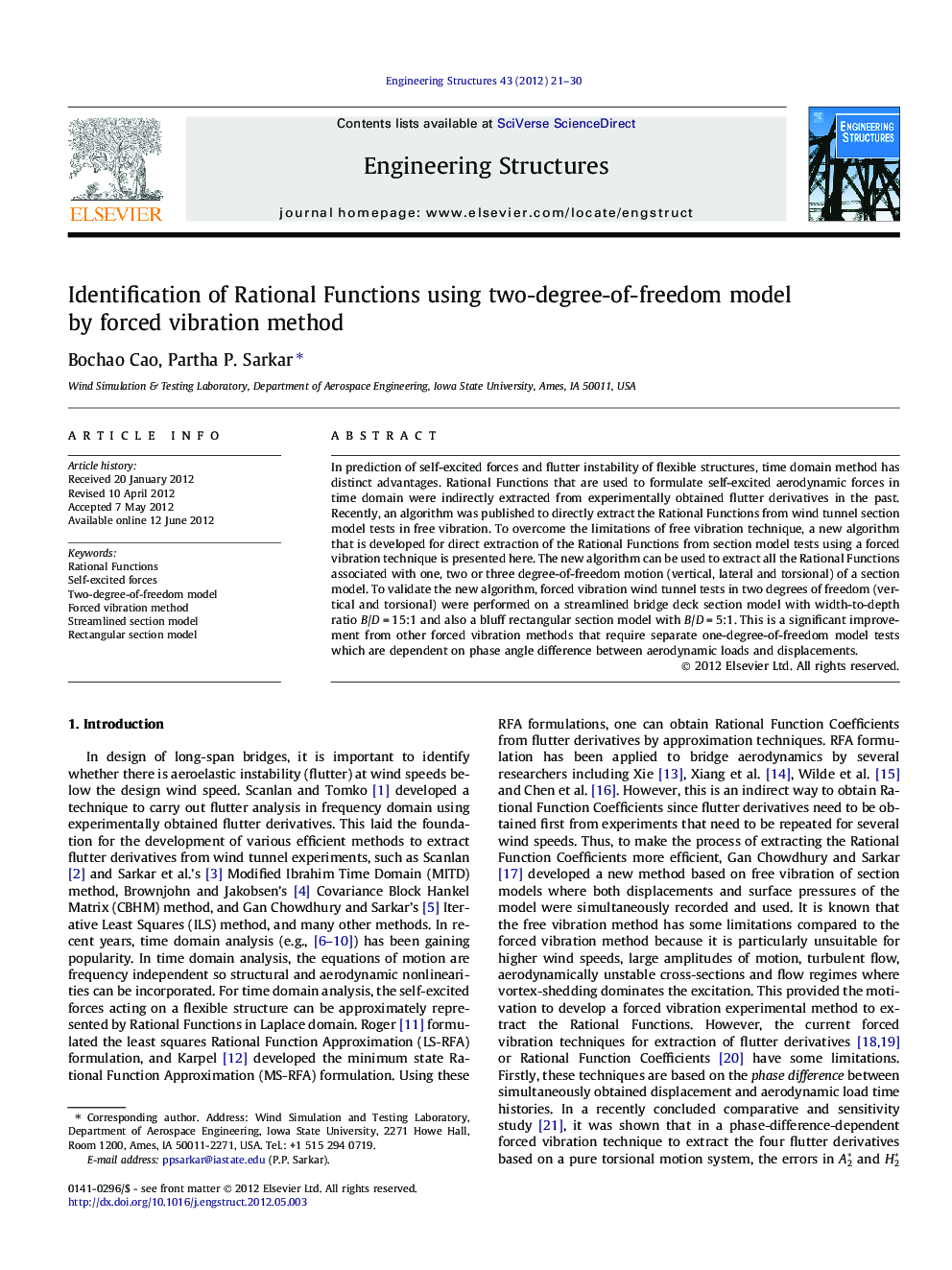| کد مقاله | کد نشریه | سال انتشار | مقاله انگلیسی | نسخه تمام متن |
|---|---|---|---|---|
| 267370 | 504400 | 2012 | 10 صفحه PDF | دانلود رایگان |

In prediction of self-excited forces and flutter instability of flexible structures, time domain method has distinct advantages. Rational Functions that are used to formulate self-excited aerodynamic forces in time domain were indirectly extracted from experimentally obtained flutter derivatives in the past. Recently, an algorithm was published to directly extract the Rational Functions from wind tunnel section model tests in free vibration. To overcome the limitations of free vibration technique, a new algorithm that is developed for direct extraction of the Rational Functions from section model tests using a forced vibration technique is presented here. The new algorithm can be used to extract all the Rational Functions associated with one, two or three degree-of-freedom motion (vertical, lateral and torsional) of a section model. To validate the new algorithm, forced vibration wind tunnel tests in two degrees of freedom (vertical and torsional) were performed on a streamlined bridge deck section model with width-to-depth ratio B/D = 15:1 and also a bluff rectangular section model with B/D = 5:1. This is a significant improvement from other forced vibration methods that require separate one-degree-of-freedom model tests which are dependent on phase angle difference between aerodynamic loads and displacements.
► This is a new method for identifying the Rational Functions from wind tunnel tests.
► The new method is efficient because it requires tests at fewer wind speeds.
► The new method uses forced vibration technique without phase-lag information.
► The RFs can be used for flutter analysis of flexible structures in time domain.
► The new method can be used for 2-DOF or 3-DOF motions for the first time.
Journal: Engineering Structures - Volume 43, October 2012, Pages 21–30